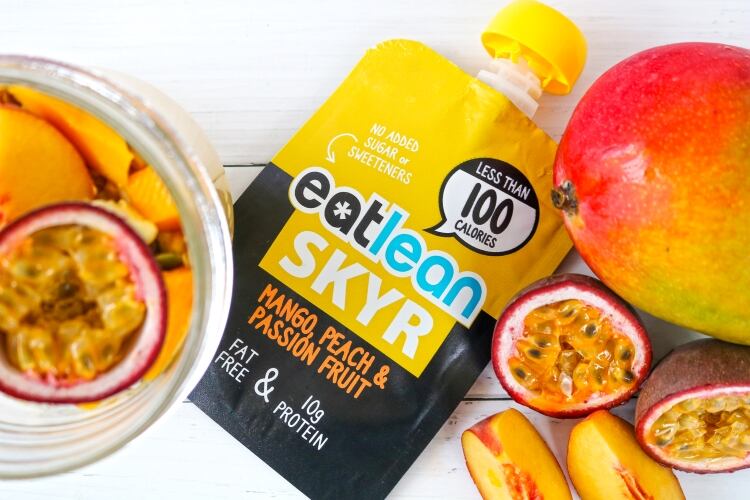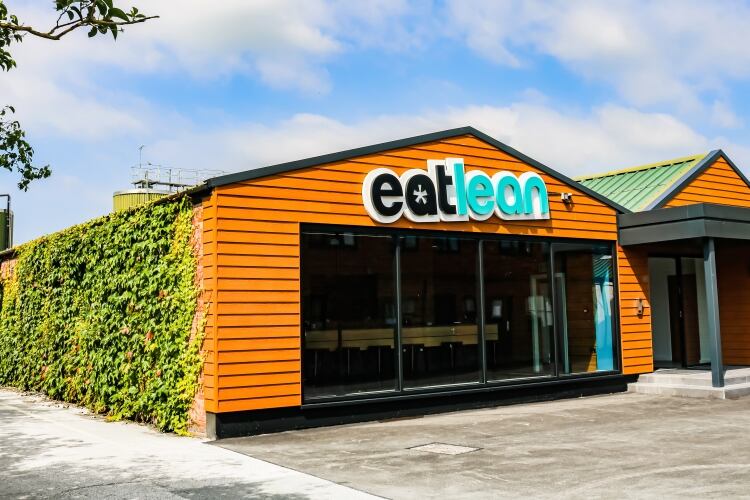According to the Food Standards Agency2, a third of UK consumers reported eating more unhealthy snacks over lockdown, with 50% of young people struggling to eat healthily.
Similarly, a report by the Bite Back 2030 healthy eating charity describes snacking as the "biggest negative consequence" in eating habits during the pandemic, with a 40% increase in snacking among young people3. The report, which studied more than 1,000 14- to 19-year-olds, also found a widening social divide in healthy and unhealthy eating.
Young people in poorer families were "more likely to snack, and less likely to eat fresh fruit and vegetables" than their wealthier counterparts, the report said.
Cheese and health may not be the most obvious of partners, but healthier, high protein cheeses are available.
George Heler, founder of UK low fat cheese brand Eatlean, which launched its new Tasty 30g snack bars in August, said, “People want a choice of great-tasting healthy cheeses which they can eat at home, and on the go.”
Traditionally cheddar contains 25g of protein per 100g but products such as Eatlean are naturally higher, boasting 37g and half the calories. Cheese with a low moisture content tends to contain more protein per serving. These therefore hit the same benchmark as parmesan, traditionally considered to be highest in protein at 35.1g and 28.8g of fat per 100g.
Arla’s protein range has been on the shelves since 2016, with yogurt and 34% protein cheese among the products available.
In August, the company also launched a new whey protein ingredient to help meet the growing demand for high-protein yogurts with health credentials and a premium positioning.
Nutrilac FO-7875 allows manufacturers to develop yogurts (both spoonable and drinkable) with significantly higher protein content than typical products, which generally range from 5% to 9%. For example, it can be used to create a drinking yogurt with 11% protein and only 0.8% fat.
Ignacio Estevez, application manager, South America at Arla Foods Ingredients, said, “Nutrilac FO-7875 meets a range of market needs. It can be used to create clean-label yogurts that are not only rich in high-quality protein, but also low in fat, as well as smooth and creamy.”
Perhaps inspired by the recent Tokyo Olympic and Paralympic Games, if someone is looking to put on muscle, it is well known that time in the gym, combined with a high-protein diet are the key ingredients to a physical transformation.
On Eatlean’s blog, UK nutritionist Ben Coomber said, “Protein is the most important macro-nutrient in the body, it’s responsible for the growth and repair of cells and so much more.
“It also happens to be the most satiating macro-nutrient of them all, meaning that it’s very difficult to over eat on protein and when you eat a meaningful serving of it with each meal you will feel less hunger and eat less food and, consequently, calories throughout the day.”
High protein snacks, particularly those with a combination of carbohydrates and other essential nutrients, can aid with recovery post-workout. Or as they say on social, IIFYM (if it fits your macros).
Translation: this is the diet where fitness fanatics calculate and track their ideal proportion of macronutrients (carbohydrate, protein and fat) to fit their body.
The grab-and-go products eaten between meals have grown into a billion dollar market, which, according to a 2019 report by Grand View Research, is set to reach $32.88bn by 2025. Brands need to keep pace with the acceleration of better-for-you snacking opportunities.
Like protein yogurts, quark and skyr are growing in popularity across Europe. In the US, General Mills Inc. launched Ratio Protein earlier this year.
“As a leader in the yogurt and dairy category, General Mills is focused on product innovation to help our consumers meet their varying health and fitness goals,” said Doug Martin, president of General Mills’ dairy operating unit.
“We know consumers are seeking protein, and with the introduction of Ratio Protein, we’re providing a delicious solution within a familiar snack that delivers the most protein in the yogurt aisle in a single-serve cup.”
Skyr can be particularly beneficial post gym, as on-the-go pouches like the Eatlean range are ambient and can be kept outside the fridge.
As Eatlean notes, with its 120,000 followers across social media, the digital world is brimming with protein ‘hacks.’ Recently posts carrying the hashtag #proffee – the nickname for protein powder mixed into coffee – were trending on TikTok, with around 2m views.
Protein powder – also available in bars, shakes and capsules – is convenient, but with rare exceptions, it’s devoid of other nutrients, which means consuming powder instead of calories from whole foods, consumers may negatively impact their intake of vitamins, minerals, healthy fats and plant compounds that are vital for health and for getting and staying fit.
But no two sources are the same. According to Eatlean, the body metabolizes 200g of protein cheese or yogurt very differently to 200g of chocolate due to the macronutrients they contain. While research shows a calorie-controlled diet results in similar weight loss no matter what macronutrients you eat, the macronutrient approach is more focused on eating well for life.
Keeping pace with these changes and emerging trends is vital for dairy to remain relevant in consumer’s lives, Heler said.
Eatlean recently unveiled its new headquarters in Nantwich as part of the brand’s commitment to investing in health.
In addition to its new headquarters, Eatlean has invested in a new management team over the last 12 months and opened fulfillment sites in Spain and the Netherlands to support international growth plans.
Eatlean’s cheese boasts half the calories of traditional cheddar and is now available across all the major multiples (Tesco, Sainsburys, Asda, Morrisons, Waitrose and Ocado) as well as directly online, with Eatlean recording more than 60% growth in the last 12 months.
1. https://www.dental-nursing.co.uk/news/38-of-uk-adults-snacking-more-during-lockdown
2. https://www.food.gov.uk/sites/default/files/media/document/fsa-food-in-a-pandemic-march-2021.pdf
3. https://biteback2030.com/real-story/hungry-change-giving-children-food-system-works-them


